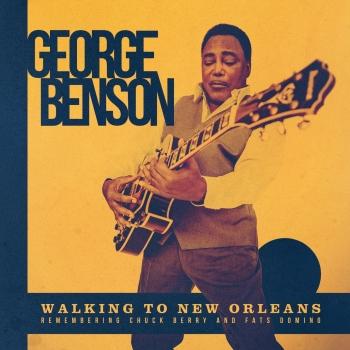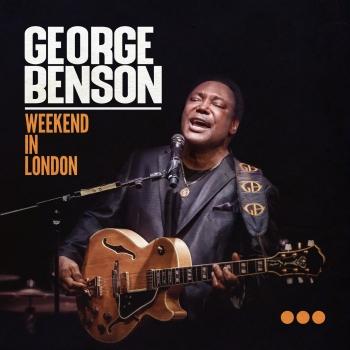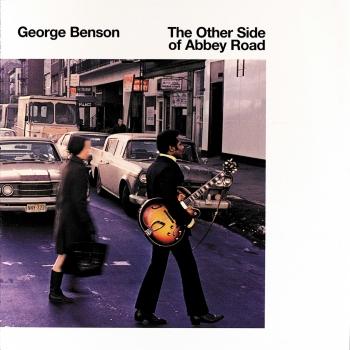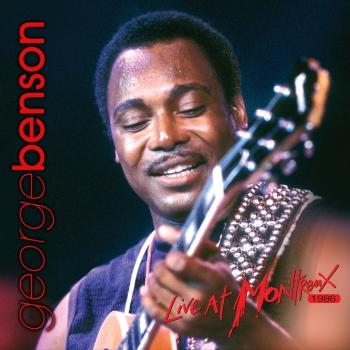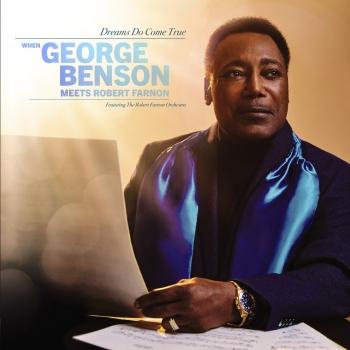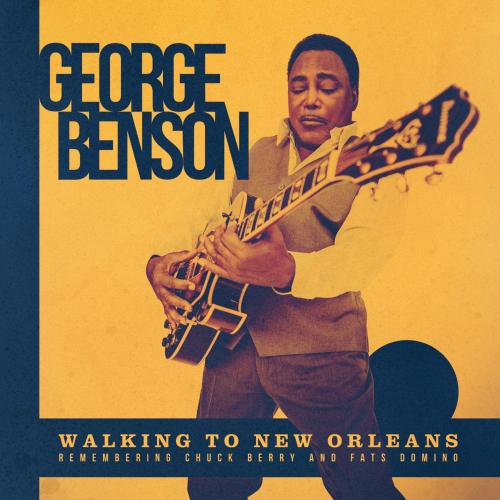
Walking To New Orleans George Benson
Album Info
Album Veröffentlichung:
2019
HRA-Veröffentlichung:
29.04.2019
Das Album enthält Albumcover
- 1 Nadine (Is It You) 03:53
- 2 Ain't That A Shame 03:49
- 3 Rockin' Chair 03:39
- 4 You Can't Catch Me 03:35
- 5 Havana Moon 04:54
- 6 I Hear You Knocking 03:45
- 7 Memphis, Tennessee 03:19
- 8 Walking To New Orleans 04:08
- 9 Blue Monday 03:03
- 10 How You've Changed 03:19
Info zu Walking To New Orleans
Das neue Album "Walking To New Orleans" des legendären Jazz-Gitarristen George Benson ist eine musikalische Huldigung an Chuck Berry und Fats Domino!
Auf "Walking To New Orleans" kehrt George Benson zu seinen Americana-Wurzeln zurück. Sein neues Album widmet der Sänger und Gitarrist sowohl der Piano-Hitmaschine aus New Orleans, Fats Domino, als auch dem Rockpoeten Chuck Berry.
"Walking To New Orleans" ist das erste Album der Jazz-Pop- und R'n'B-Legende seit dem 2013 erschienenen »Inspiration«. Letzteres war ein Tribut an Nat King Cole, doch das neue Werk könnte nicht unterschiedlicher sein. Während Benson Coles Melodien damals mit üppigen Orchester-Arrangements verzierte, begab er sich für »Walking To New Orleans« zusammen mit vier der berühmten Nashville Cats in das Ocean City Studio, das in einer jahrhundertealten neogotischen Steinkirche im Music Row-Distrikt in New Orleans beheimatet ist.
"Walking To New Orleans" wechselt zwischen Songs von Berry und Domino hin und her, als würde Benson einen musikalischen Dialog zwischen Missouri und Louisiana moderieren. Es beginnt mit Berrys nachdenklichem »Nadine (Is It You?)« aus dem Jahr 1964, auf dem Benson im Gleichklang sein Gitarrensolo spielt. Auf den darauffolgenden R'n'B-Hits von Domino steht Bensons Gitarre auf »Ain't That A Shame« stellvertretend für die ursprünglichen Saxophon-Solos, und auf »Rockin' Chair« bringt eine Horn-Sektion eine völlig neue Stimmung in den Song.
"Walking To New Orleans" ist Bensons 45. Studioalbum und nur wenige klingen so locker, gerade aus und voller Freude.
"... herrlich knackig und straff produziert." (Stereo)
"Mit unbeschwert rockenden Nashville-Studiomusikern wertet Benson sogar Berrys Zweiakkord-Liedchen ›Memphis‹ zu einer komplexen Country-Ballade auf. Seine Version von ›How You've Changed‹ erinnert jeden Rock'n'Roll-Fan daran, dass Berry eigentlich in den Olymp für Jazz-Songwriter gehört." (stereoplay)
George Benson, Gitarre
Greg Morrow, Schlagzeug
Rob McNelley, Gitarre
Kevin McKendree, Klavier
Alison Prestwood, Bass
Born on March 22, 1943 in Pittsburgh, Pennsylvania, Benson showed prodigious talent from an early age, winning a singing contest when he was only four years old and enjoying a short career as a child radio performer under the name of “Little Georgie Benson.” He started playing the guitar when he was eight, but it was as a vocalist that he spent much of his vast musical energy as a teenager, organizing and performing with a succession of rhythm-and-blues and rock bands around Pittsburgh. He made recordings for RCA Victor’s X Records subsidiary in the middle 1950s. But Benson’s stepfather encouraged his instrumental efforts by constructing a guitar for him, and in his late teens he began to concentrate exclusively on guitar. Seeking out the music of modern jazz’s golden age, he became more and more interested in jazz, and was particularly inspired by recordings of saxophonist Charlie Parker and guitarists Charlie Christian and Grant Green.
Discovered by John Hammond: In 1961 Benson jumped to the national stage when he joined the group backing jazz organist Jack McDuff. He played and recorded with McDuff for four years. Then he struck out on his own: he moved to New York City, then the capital of the jazz universe, and formed his own band. There Benson made two acquaintances who proved crucial in setting him on the path to jazz stardom: guitarist Wes Montgomery, whose soft tone and graceful octave playing provided Benson with his most important stylistic inspiration, and Columbia Records producer and executive John Hammond, whose unerring eye for talent brought
Dieses Album enthält kein Booklet










